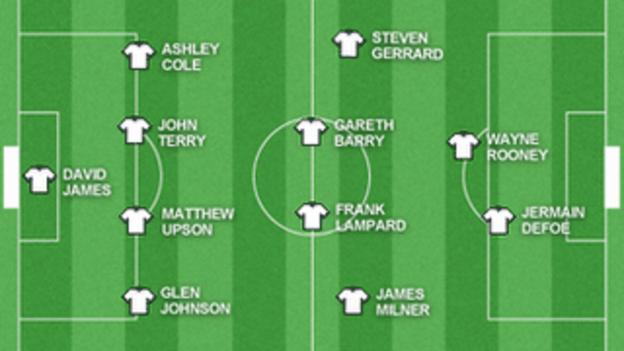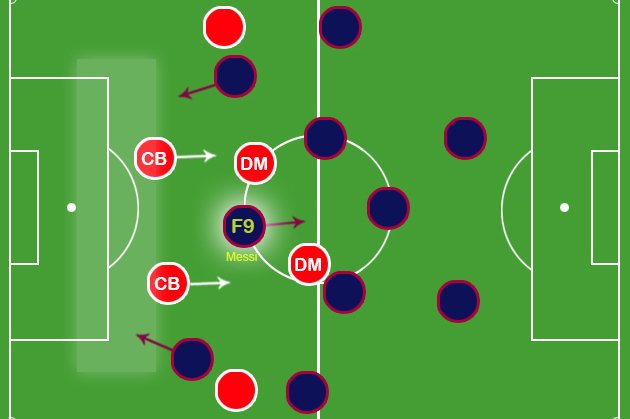
Asymmetrical Tactics; Tremendous or Trouble?
In my previous article where I discussed asymmetrical tactics, I went into detail offering more of a defence as to why they are beneficial and only went into minor detail as to their use. In this article, I start looking at the use of asymmetrical tactics in real life.
When looking at certain football managers or even being a young coach within grassroots football. A common question asked of managers and coaches is: What is your philosophy? Philosophy has become a buzzword in the world of modern-day football management. Being said to possess one carries an intellectual air about it; the phrase ‘we won’t compromise our principles’ is routinely met with nods of approbation.
When viewing one’s philosophy one has to check whether or not the philosophy is pragmatic. The Oxford English Dictionary lists pragmatism as ‘dealing with things sensibly and realistically in a way that is based on practical rather than theoretical considerations. Being pragmatic in football suggests a dull, safety-first style of play in an effort to play the “right way”.

Capello’s England
When thinking about asymmetrical tactics, my thinking goes back to Fabio Capello’s time as England’s national team manager. If there would be one word to describe Capello it would be pragmatic. During his tenure, England’s lack of left-wingers was seemingly their weakness. Capello, like myself, protests against such designations as 4-4-2 or 4-2-3-1 etc. Tactical numbers such as 4-4-2, 4-2-3-1 are useful, but crude. Essentially, they are tools to give a general idea of shape, more relevant to those analyzing the game. To insist that a team playing what we, for example, call 4-2-3-1, must have a winger on each side is a rather presumptuous description. Just because a certain way of playing doesn’t conveniently fit any default template does not diminish it; in fact, if anything, it may give it greater validity by making it harder to combat. That, really, is the advantage of asymmetry; it presents sides with unfamiliar and unpredictable problems.
Other cultures seem to have a far richer vocabulary with which to describe players, which in turn perhaps leads to greater tactical sophistication as it becomes immediately apparent that setting up a team is not about slotting players into a position with the aim of making a specific tactical shape. Capello was not hindered by the dogma that players must play in their best positions, because he did not see them as simple positions.
Steven Gerrard was usually the one that fans described as being shunted out on the left-wing. The thought that Steven Gerrard must play in his natural position through the middle was not a hindrance to Capello, as Gerrard was less a central midfielder but a bundle of attributes. It could possibly have been the use of Gerrard out of left that saw the resurgence of inverted wingers. Playing him to the left of Rooney allowed Gerrard to cut in on to his stronger right foot. The attacking width on the left was provided by Ashley Cole, with: (1) Frank Lampard sitting deeper covering the deeper left-centre positions; (2) Gareth Barry providing to be a midfield blocker; and (3) Walcott adding orthodox width on the right.

Taking all this into account, England had a diverse range of options from the left that built into a balanced asymmetrical style of play. Let’s be honest though, the system used by Capello was not the best. Whilst he was manager of England, the national team weren’t overly successful.
Pep’s Barcelona – The False 9
The manager that has been very successful with asymmetrical tactics is Pep Guardiola. Pep, like all managers, has his own playing style and has been known to stick to his principles. Despite this, Guardiola is actually quite dynamic in the way he sets his teams up, based on his own personnel and the opposition.

Pep was the manager that utilised the False 9 role to its maximum strength. Granted, having one of the best players to ever grace a football pitch, Messi, playing the role did help, but it was this role that got people talking about atypical formations.
“I remember that it was a surprise for me because I was called up the day before the game, was made to go to Guardiola’s office at the Ciutat Esportiva, and I was told that he had been watching Madrid’s games a lot, as he did with every opponent. He had been talking with Tito Vilanova and they had thought about me playing as a false nine. He was going to put Samuel and Thierry Henry on the outside, and I was going to play as the false centre forward. I wasn’t going to stay there, but rather come out and join up with the central midfield. The idea was that Madrid’s centre backs would follow me out, and the two fast wingers that we had would go around the back. In fact, one of Henry’s goals was like that. It was a surprise for us and for Madrid. I remember that we had a lot of possession, and we always had an extra man in the middle of the park. I’d never played as a centre forward, but I knew that position because it meant coming through from deep to get forward, without being a static number 9. It wasn’t a big change for me. I’d been playing on the outside for years, and so I knew what that position was about.”
Pep’s tactical systems are tweaked constantly with the aim of getting the best out of his players. Pep often uses asymmetrical and atypical formations/setups to accentuate strengths.
Pep uses many forms of atypical formations, showing that his teams use what Football Manager would phrase as a fluid formation. At Barcelona, we saw Dani Alves playing as a winger with Eric Abidal taking up more of a centre-back role which allowed for consistent overloads on the right side of the pitch in an asymmetrical style. This trend continued throughout his time at Barcelona as can be seen in the picture below from zonalmarking.net
When Pep joined Bayern Munich, he took his asymmetrical philosophy with him. At Bayern and Man City Pep introduced the world to Inverted Wing Backs. Before Pep, Bayern struggled with ball circulation and one on one defending in counter-press situations. By instructing the full-back to drift centrally ball circulation was much easier as players were much closer together which also allowed the team to press when required.
The use of inverted wingers despite playing in the central areas of the pitch does support the utilisation of the team’s other players. At Bayern and City Pep deployed Inverted Wing Backs alongside wingers which provided the natural width which for the players that are naturally good at direct dribbling from wide positions is a massive strength (here we are talking about Inverted Wingers).
Many asymmetrical teams are linked to possession-based football given that the teams are usually compact to allow for short passes – this clearly shows an advantage for these systems when in possession. But what about when out of possession?
All in all, asymmetrical shapes can create a huge advantage. The concept enables managers to use players in their preferred roles while also holding the advantage to purposefully create numerical superiorities or inferiorities in certain areas of the pitch.
Nevertheless, the usage of a constantly asymmetrical shape requires the ability to sustain possession as it also possesses weaknesses with its underloads in certain areas. Therefore, it is a tactical tool that is mainly utilised by topsides and which is more complex than positional play or attacking overloads.
I will continue to read more into the asymmetrical tactics in real life and start discussing the asymmetrical tactics that I have used on Football Manager. I hope that by reading this I have given you a fresh perspective on my view of asymmetrical tactics and that I have enabled you to broaden your mindset when it comes to creating your own tactics on Football Manager.
As always, I value your opinions and look forward to hearing your thoughts.
What is your most preferred tactical style on Football Manager? Let us know on our social media!
Join our discord to talk Football Manager and more!
You can also let me know on Twitter!
Check out the recent work from Dictate The Game’s other amazing writers.
- One-Club Man: La Cantera
- One-Club Man: Defence-First Football & Club DNA In FM24
- One-Club Man: 1st Day on The Job, Meet The Team
- The Story of One-Club Man
- FM24 Release Date Announced!